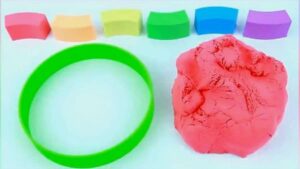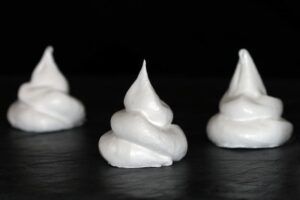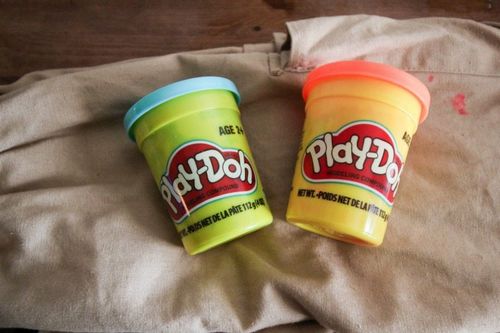
How To Make Playdough Softer? Have A Try
Each and every person enjoys playing with playdough, regardless of age. Everyone enjoys using playdough to create forms and sculptures, whether they are adults or children. The problem is that it dries so quickly. Salt, water, and flour are the main ingredients of playdough, which dries out quickly. It implies that you can no longer shape it as you like. How to make playdough softer?
Generally, there are three methods: by gentle paper absorbent, break playdough into small & little pieces, add a drop of water.
Let’s have a look.
Table of Contents
Why Is Playdough Hard?
Playdough is a exciting recreation for kids. They can be innovative as lots as they want. The manufacturing of playdough is an effortless process. It consists of water, salt, and flour. Salt prevents children and micro organism from consuming playdough while flour is brought for ideal texture alongside with some meals coloring.
Sometimes, playdough turns into too dry to assemble, or every now and then it turns into too sticky. Let us seem at the motives why playdough is sticky or dry.
Absorbing Too Much Moisture
Playdough is the most innovative way to maintain your children engaged. But if the playdough absorbs a giant quantity of water from the surroundings, it can flip sticky. By including an sufficient quantity of flour, you can restoration this trouble at home. Just add a little quantity of flour and combine it properly. Your playdough will have the ideal texture like a new one.
Old Playdough
Although playdough can be saved in an hermetic container, retaining it for a longer time can end result in dried playdough. To keep away from such an incident, add water into the playdough and knead it generously. It’ll be sparkling and equipped to use. You can convert it into any preferred shape.
Leaving In Open Air
Although playdough is fun, it can without difficulty be dried if left in an unsealed container. This takes place due to the fact the air in our environment evaporates the moisture content material in playdough, leaving in the back of challenging chunks of salt and flour. See more about How To Make Playdough Soft Again?
Dried Playdough Can Be Softened
The playdough drying out is such a bummer. even on occasion without playing with it. Playdough is impossible to enjoy because it becomes brittle and flaky chunks. It can be fixed, though. Simple consistency is required. It won’t take long, I promise. The methods listed below have been tried and true; use them to soften your dried playdough.
How To Make Dried Playdough Softer?
It is so unlucky that the playdough dries out. Sometimes even except taking part in with it. Turning into challenging and flaky chunks makes playing playdough impossible. However, you can restore it. You simply have to be consistent. Trust me, it won’t take lots time. Following are the tried and examined strategies you can put in force to soften your dried playdough.
By Gentle Paper Absorbent
To follow this method, you want to do the following steps:
You can use bathroom paper or a napkin, or any different gentle paper absorbent. Soak your paper absolutely with water then wrap it round your playdough.
Wrapping playdough will be less complicated if you convert it into a ball or a large strong chunk. Make certain you have included the whole playdough.
Take a plastic container and location the playdough in it. Make certain the container is hermetic so the moisture shouldn’t escape.
After masking it firmly from the lid, go away the container overnight.
After nearly 24 hours, dispose of the lid of the container and test whether or not or no longer the towel is wet.
If the towel is now not wet, put off it from the playdough.
Squeeze and knead the playdough gently. It must be softened and prepared to play again.
In case, the dough is no longer smooth but then it may be time to purchase a new one.
Break Playdough Into Small & Little Pieces
Another convenient method for softening the playdough is noted below:
Start from breaking playdough into small and little pieces. It’ll be in a position to take in water rapidly and properly.
Put the shredded portions of playdough into a plastic Ziploc bag.
Make positive the bag is sealed and there’s no way for air or moisture to enter.
Add a little quantity of water to the bag and shut it.
Now combine the water and playdough gently. Knead it generously with fingers so that playdough rapidly absorbs water.
You can add extra water if needed.
Leave the plastic bag sealed overnight. It is essential for the whole absorption of water into playdough.
Take out the playdough from the plastic bag if it is totally dry or else the coloration of the dough will scatter all over your hands.
Knead it properly with the arms of your arms and revel in enjoying with it.
Add A Drop Of Water
This is the most frequent technique that is used to retrieve the softness of playdough. You want to comply with the steps listed below:
Take your dough in a bowl and add a drop of water to it.
Don’t pour too much, simply add drop by means of drop.
Using fingers, assist water to penetrate the dough.
Be constant and knead nicely to gain the preferred results.
Continue repeating the identical procedure till the dough is soft.
Your playdough is once more gentle and slimy.
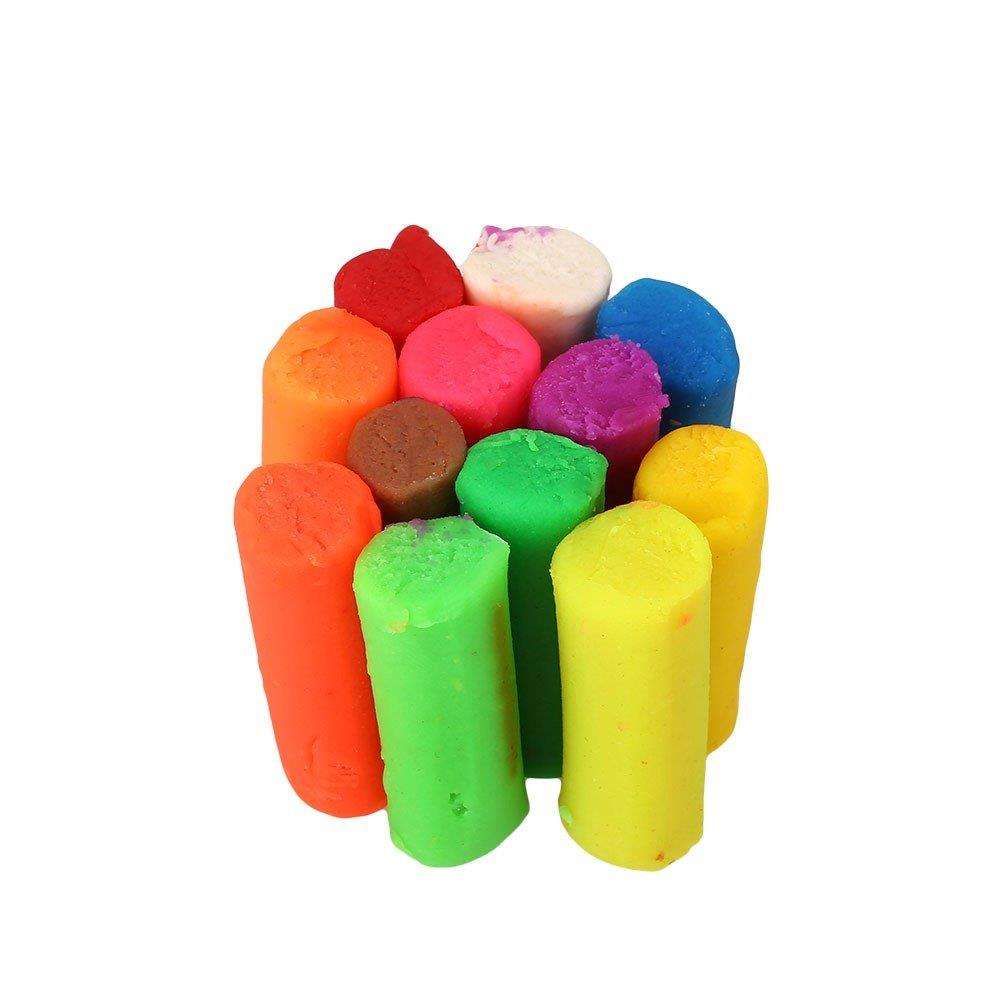
Softening Your Playdough By Hand
You only need your hands and a small amount of water for the first technique.
Just add some water to the play dough and gently knead it. When you reach the desired consistency, add the water sparingly and gradually.
Simply keep kneading it thoroughly if you add too much water so that the water either permeates or escapes.
Note that if you’re working with very dry and hard plasticine, it’s wise to use a container (like a bowl), as it will likely have a tendency to crumble significantly.
The main drawback of this method is the likelihood that the dye will end up on your hands. However, there is nothing that a thorough handwashing can’t resolve.
Utilize A Damp Cloth Or Some Absorbent Paper
Our second DIY solution is not much more complex:
- Wrap your play dough in a paper towel or tea towel that has been lightly dampened.
- While the water is being completely absorbed, place your bundle in a container with a tight lid (such as a Tupperware or freezer bag).
- In a day or two, the play dough ought to be soft. If you are using paper towels, a good tip for knowing when it is finished is to look at the paper; if it is dry, you are good to go.
To make this method more effective, try first kneading the playdough and forming a tight ball.
Use A Transparent Plastic Bag
Utilizing a clear plastic bag is the last approach we’ll take. Although the dye may bleed, it uses essentially the same method as doing it by hand and is a little less messy. Additionally, it is much more practical if you are working with crumbs.
- Put your modeling clay in a bag and break it up into a number of large pieces. Intake of water will be aided by this.
- Once the bag is sealed by turning it just a little, add a little water and knead the dough until it reaches the desired consistency.
- Don’t pour too much water at once; instead, take it slowly and adjust as you go.
- To ensure that the plasticine absorbs all the water, leave the sealed bag out for at least one night.
- If the result is insufficient, adjust the amount of water, or if the dough seems too wet, let it dry longer.
How To Easily Repair Dried Playdough?
Dry playdough is easy to repair. This requires only four simple steps.
Decide Which Playdough Can Be Repaired
So before you put your energy and love into this activity, remember that not all dry playdough can be repaired.
In fact, if your playdough is as hard as stone, there is no way to make it soft and interesting. This cannot be repaired.
First, make sure the playdough is still a little soft in the middle, or you can put your fingers in it before you start. Fragile and rough playdough is very suitable for this hack.
Divide Into Small Batches
Now, divide the dried playdough into small portions of about 60 grams. It is more difficult to knead and repair in large quantities!
If you have a lot of dry playdough, you must repeat the following steps several times.
Spray Water On The Playdough
Put the ball into a safe bowl in the microwave oven and spray water around the ball with a spray bottle.
The drier the dough is, the more water is needed.
Spray 3-4 points of water at the beginning to avoid adding too much water, which will cause the dough to be sticky.
Heat The Dough In The Microwave Oven
Now, heat it in the microwave for 10 to 15 seconds to soften the dough.
Take it out of the microwave oven and put it into the plastic bag carefully.
Press the bag with your hand and knead the dough so that the water touches all the dough. It will become softer and less sticky.
When the dough is easy to hold by hand, take it out of the bag and knead it again. It should be perfect now, but if it’s too wet, continue kneading to let the dough absorb water.
If it is too dry, repeat the above steps until the playdough returns to its natural softness.
Of course, depending on the initial state of the playdough, you may need to add more water or heat it in the microwave several times. See more about How to soften Playdough (Play-Doh)
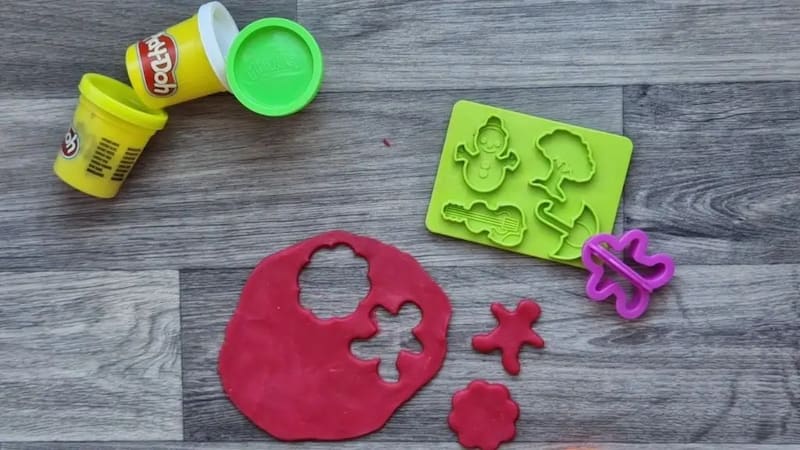
Make Playdough Soft And Stretchy Again
Even when playdough is kept in an airtight container, it can still dry out. You can still re-make it soft and flexible in this situation. The simple steps you can take to fix your playdough are listed below.
- Put your playdough, which should only be one color, in a bowl.
- Drop some water into it. You can add more than one drop of water if you’ve taken in more liquid.
- Continuously knead the dough using your palms and fingertips.
- Stay persistent until the playdough is fixed.
- Playdough will become soft and stretchy again if the kneading is not stopped.
In addition to all the fun your kids will have with playdough, make sure they are under adult supervision at all times. Playdough can still cause choking in children even though it does not contain any toxic ingredients. Stomach ache, vomiting, or agitation may happen if consumed. Your child will pass it in stool along with some mild diarrhea, so don’t freak out.
How Can Playdough Be Softened In The Microwave?
Amazing qualities can be found in playdough. It can always be recycled and used instead of retiring. It’s amazing that you can create one at home, and it makes sense why this toy has become one of history’s most recognizable playthings.
Playdough is a versatile toy, but you can be as imaginative as you like with it. Despite all of its advantages, it becomes dry when exposed to air. The playdough becomes dried after the moisture content evaporates. Playdough’s softness, stretchability, and silkiness can be revived, though, with the help of a few strategies and hacks.
Utilizing a microwave oven to soften playdough is a very unusual but helpful technique. You can soften your playdough in the oven by following the instructions below.
Your dried playdough should be placed in a bowl that can be heated in a microwave.
- To make a sticky paste out of the dough and water, add a small amount of water.
- To create a structure resembling paste, generously stir in.
- Place the bowl in the microwave after mixing until the mixture is dried.
- You only need to dry it until the desired softness is reached; you don’t need to dry it completely.
- Start kneading the dough after removing the baking dish. It will be very hot, so use caution.
- Your dough will be as fresh as new once you’ve kneaded it for a while. It will have a smooth texture and be soft and stretchable.
How Can Playdough Be Preserved?
The secret is to keep your playdough out in the open for the least amount of time possible if you want to keep it flexible. Once your child has finished playing, make sure they clean up after themselves and put the Playdough back in the box.
The best option is unquestionably a straightforward Tupperware if you no longer have your original packaging. Another choice is a waterproof freezer bag, but these can occasionally be a little less reliable, especially when used frequently by kids.
Conclusion
By adding the proper amount of water, Playdough may be easily softened. Even if your playdough is hard and no longer elastic as it once was, adding moisture can revive it and make it soft and elastic once more.
Playdough is an untidy but artistic material. Unfortunately, if kept in an open container, it quickly dehydrates. Applying certain tips and tactics to rehydrate it is preferable to throwing it out. Your playdough will be prepared for reuse with only a little time and effort.
You can use a few quick and simple methods to get your playdough back to its original softness. Simply adhere to the easy instructions provided in this article.

